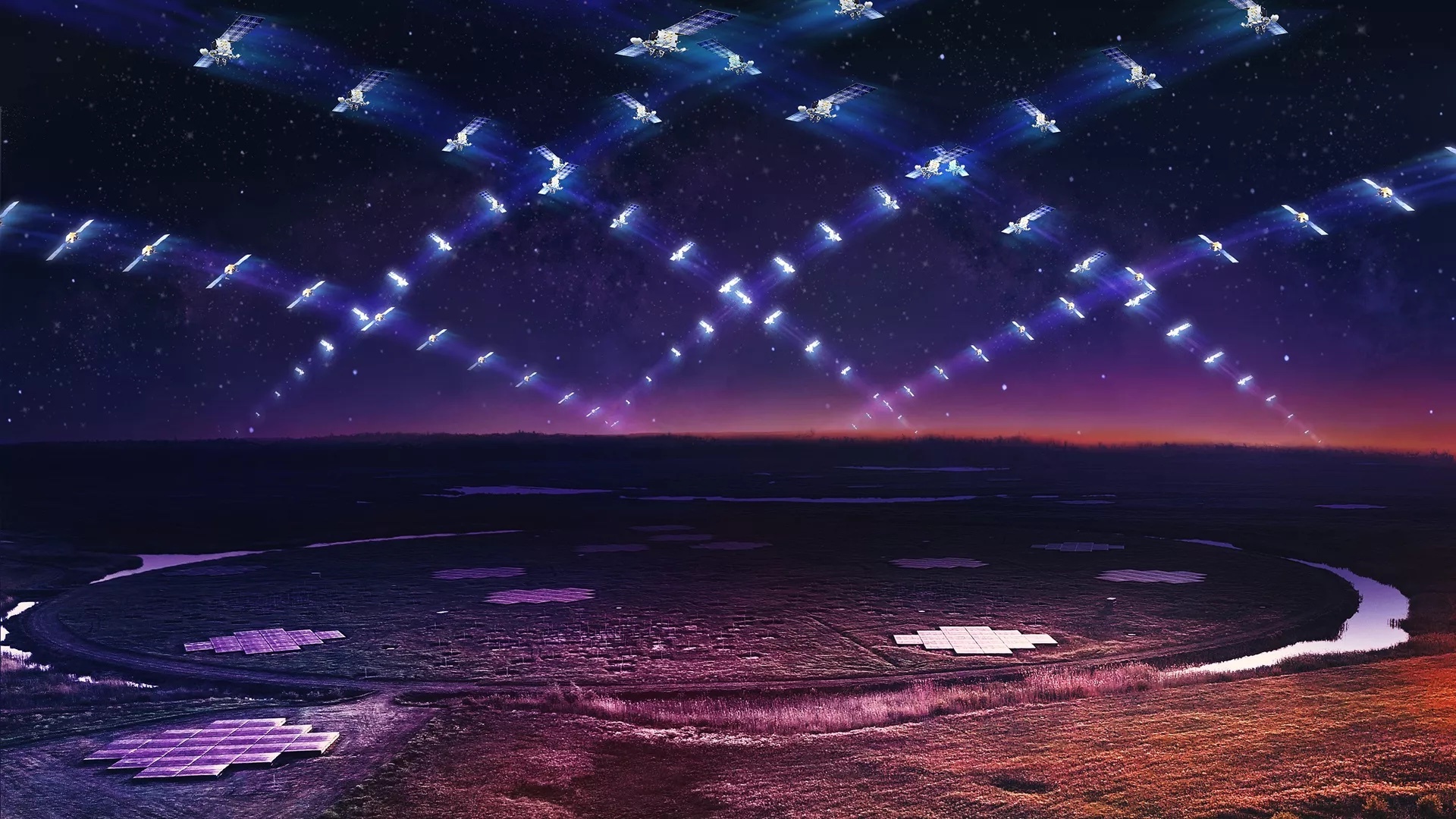7.07.2023
Starlink satellites can disturb observation even of those telescopes protected by radio-quiet zones.

The LOFAR radio astronomy array in the Netherlands can detect electronic hum from Starlink satellites, raising concerns about the megaconstellation's impact on radio astronomy. (Image credit: ASTRON/ Danielle Futts)
Hum from onboard electronics that power SpaceX's internet-beaming Starlink satellites may disturb radio astronomy observations, a new study has found.
Experts have long warned about how astronomy is being impacted by megaconstellations of low Earth orbit satellites such as SpaceX's Starlink. The streaks those satellites leave in astronomical images mar observations of telescopes even in the most remote locations. The reflection of sunlight from these satellites might lead to an unwanted brightening of the night sky even in areas far away from urban light pollution. And the radio waves these satellites use to carry out their communications could hamper the observations of sensitive radio telescopes.
But a new, unexpected source of scientific disturbance has now emerged thanks to a new study conducted by researchers using the Low Frequency Array (LOFAR) telescope in the Netherlands: Radiation from the onboard electronics inside Starlink satellites.
LOFAR is a network of over 40 radio antennas spread across the Netherlands, Germany and a few other European countries. The telescope is capable of detecting the longest wavelengths of radiation emitted by objects in the cosmos. However, as it transpires, radio frequencies similar to those LOFAR is designed to detect are also unintentionally emitted by Starlink satellites. In the new study, the researchers described detecting this unwanted low-frequency radio hum from nearly 50 Starlink spacecraft.
"With LOFAR, we detected radiation between 110 and 188 MHz from 47 out of the 68 satellites that were observed," Cees Bassa, an astronomer at the Netherlands Institute for Radio Astronomy (ASTRON), which manages the LOFAR array, and a co-author of the recent paper said in a statement. "This frequency range includes a protected band between 150.05 and 153 MHz specifically allocated to radio astronomy by the International Telecommunications Union."
The finding is of concern to next-generation large-scale radio observatories, such as the Square Kilometer Array Observatory (SKAO), which is currently being built on two remote sites in Australia and South Africa. To maximize the telescope's ability to detect even the faintest signals, regulators have placed radio-quiet zones around the sites where no cellular telephony, terrestrial TV or radio use is allowed. Starlink (and other internet-beaming) satellite constellations, however, can freely travel over those locations and due to their low altitude disturb observations.
The ASTRON team added in their statement that SpaceX is not in breach of any rules as this kind of radiation from satellites is not regulated by any guidelines, unlike that of the terrestrial devices.
"This study represents the latest effort to better understand satellite constellations' impact on radio astronomy," the study's lead author and SKAO spectrum manager Federico Di Vruno, said in the statement. "Previous workshops on Dark and Quiet Skies theorized about this radiation, our observations confirm it is measurable."
The researchers further modeled the impact of this "unintended" radiation from a larger number of satellites. The simulations showed that the unwanted effects would become more pronounced with the constellation's size.
"Our simulations show that the larger the constellation, the more important this effect becomes as the radiation from all satellites adds up," said co-author Benjamin Winkel from the Max-Planck-Institute for Radio Astronomy (MPIfR) in Germany. "This makes us not only worried about the existing constellations but even more about the planned ones. And also about the absence of clear regulation that protects the radio astronomy bands from unintended radiation."
The authors added that SpaceX is collaborating with the astronomers in search for solutions that would enable the constellation and astronomy to coexist without negative impacts.
SpaceX has already launched well over 4,000 Starlink satellites, according to astrophysicist and satellite tracker Jonathan McDowell. The company already has regulatory approval to deploy 12,000 of the broadband communications satellites and has filed for approval to launch another 30,000 Starlink craft.
The study was published in the journal Astronomy & Astrophysics on Wednesday, July 5.
Quelle: SC

